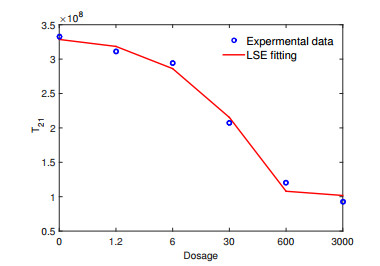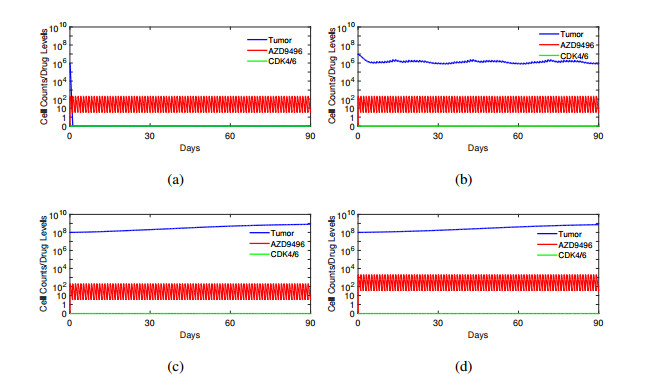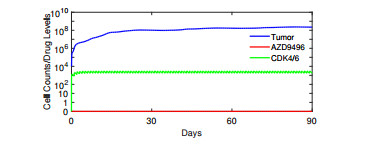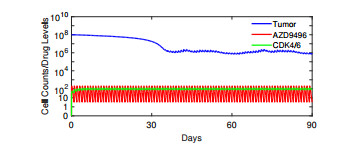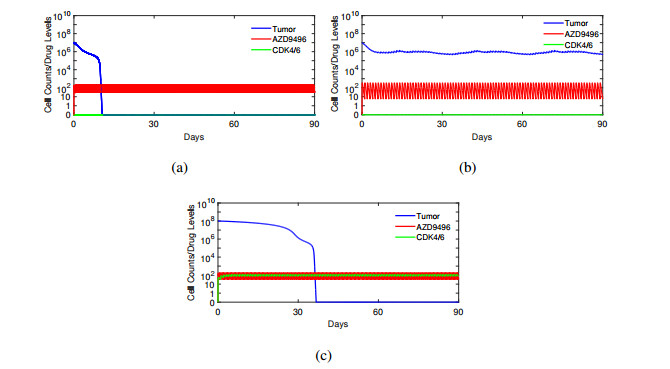|
[1]
|
N. M. Zaitoun, M. J. Aqel, Survey on Image Segmentation Techniques, Procedia Comput. Sci., 65 (2015), 797-806. doi: 10.1016/j.procs.2015.09.027

|
|
[2]
|
M. Sridevi, C. Mala, A Survey on Monochrome Image Segmentation Methods, Procedia Technol., 6 (2012), 548-555. doi: 10.1016/j.protcy.2012.10.066

|
|
[3]
|
A. K. M. Khairuzzaman, S. Chaudhury, Multilevel thresholding using grey wolf optimizer for image segmentation, Expert Syst. Appl., 86 (2017), 64-76. doi: 10.1016/j.eswa.2017.04.029

|
|
[4]
|
J. Tang, Y. Wang, C. Huang, H. Liu, N. Al-Nabhan, Image edge detection based on singular value feature vector and gradient operator, Math. Biosci. Eng., 17 (2020), 3721-3735. doi: 10.3934/mbe.2020209

|
|
[5]
|
X. Song, Y. Wang, Q. Feng, Q. Wang, Improved graph cut model with features of superpixels and neighborhood patches for myocardium segmentation from ultrasound image, Infinite Study, 2019.
|
|
[6]
|
X. Lu, Z. You, M. Sun, J. Wu, Z. Zhang, Breast cancer mitotic cell detection using cascade convolutional neural network with U-Net, Math. Biosci. Eng., 18 (2021), 673-695. doi: 10.3934/mbe.2021036

|
|
[7]
|
H. Jia, K. Sun, W. Song, X. Peng, C. Lang, Y. Li, Multi-Strategy Emperor Penguin Optimizer for RGB Histogram-Based Color Satellite Image Segmentation Using Masi Entropy, IEEE Access, 7 (2019), 134448-134474. doi: 10.1109/ACCESS.2019.2942064

|
|
[8]
|
S. Wang, H. Jia, X. Peng, Modified salp swarm algorithm based multilevel thresholding for color image segmentation, Math. Biosci. Eng., 17 (2019), 700-724.
|
|
[9]
|
A. Dirami, K. Hammouche, M. Diaf, P. Siarry, Fast multilevel thresholding for image segmentation through a multiphase level set method, Signal Process., 93 (2013), 139-153. doi: 10.1016/j.sigpro.2012.07.010

|
|
[10]
|
E. Hamuda, M. Glavin, E. Jones, A survey of image processing techniques for plant extraction and segmentation in the field, Comput. Electron. Agric., 125 (2016), 184-199. doi: 10.1016/j.compag.2016.04.024

|
|
[11]
|
S. Kotte, R. K. Pullakura, S. K. Injeti, Optimal multilevel thresholding selection for brain MRI image segmentation based on adaptive wind driven optimization, Measurement, 130 (2018), 340-361. doi: 10.1016/j.measurement.2018.08.007

|
|
[12]
|
N. Otsu, A threshold selection method from gray-level histograms, IEEE Trans. Syst. Man Cybern., 9 (1979), 62-66. doi: 10.1109/TSMC.1979.4310076

|
|
[13]
|
J. N. Kapur, P. Sahoo, A. K. C. Wong, A new method for gray-level picture thresholding using the entropy of the histogram, Comput. Vis. Graph Image Process., 29 (1985), 273-285. doi: 10.1016/0734-189X(85)90125-2

|
|
[14]
|
A. K.Bhandari, V. K. Singh, A. Kumar, G. K. Singh, Cuckoo search algorithm and wind driven optimization based study of satellite image segmentation for multilevel thresholding using Kapur's entropy, Expert Syst. Appl., 41 (2014), 3538-3560. doi: 10.1016/j.eswa.2013.10.059

|
|
[15]
|
M. A. E. Aziz, A. A. Ewees, A. E. Hassanien, Whale Optimization Algorithm and Moth-Flame Optimization for multilevel thresholding image segmentation, Expert Syst. Appl., 83 (2017), 242-256. doi: 10.1016/j.eswa.2017.04.023

|
|
[16]
|
K. P. Baby Resma, M. S. Nair, Multilevel thresholding for image segmentation using Krill Herd Optimization algorithm, J. King Saud Univ. Comput. Inf. Sci., (2018), forthcoming.
|
|
[17]
|
A. Ibrahim, A. Ahmed, S. Hussein, A. E. Hassanien, Fish image segmentation using Salp Swarm Algorithm, in The International Conference on Advanced Machine Learning Technologies and Applications (AMLTA2018), Springer, (2018), 42-51.
|
|
[18]
|
S. Ouadfel, A. Taleb-Ahmed, Social spiders optimization and flower pollination algorithm for multilevel image thresholding: A performance study, Expert Syst. Appl., 55 (2016), 566-584. doi: 10.1016/j.eswa.2016.02.024

|
|
[19]
|
M. Díaz-Cortés, N. Ortega-Sánchez, S. Hinojosa, D. Oliva, E. Cuevas, R. Rojas, et al., A multi-level thresholding method for breast thermograms analysis using Dragonfly algorithm, Infrared Phys. Technol., 93 (2018), 346-361. doi: 10.1016/j.infrared.2018.08.007

|
|
[20]
|
S. C. Satapathy, N. Sri Madhava Raja, V. Rajinikanth, A. S. Ashour, N. Dey, Multi-level image thresholding using Otsu and chaotic bat algorithm, Neural Comput. Appl., 29 (2018), 1285-1307. doi: 10.1007/s00521-016-2645-5

|
|
[21]
|
M. Salvi, F. Molinari, Multi-tissue and multi-scale approach for nuclei segmentation in H & E stained images, BioMed. Eng. OnLine., 17 (2018), 89. doi: 10.1186/s12938-018-0518-0

|
|
[22]
|
Y. Feng, H. Zhao, X. Li, X. Zhang, H. Li, A multi-scale 3D Otsu thresholding algorithm for medical image segmentation, Digital Signal Process., 60 (2017), 186-199. doi: 10.1016/j.dsp.2016.08.003

|
|
[23]
|
D. Zhao, L. Liu, F. Yu, A. A. Heidari, M. Wang, G. Liang, et al., Chaotic random spare ant colony optimization for multi-threshold image segmentation of 2D Kapur entropy, Knowl. Based Syst., 216 (2021), 106510. doi: 10.1016/j.knosys.2020.106510

|
|
[24]
|
D. Zhao, L. Liu, F. Yu, A. A. Heidari, M. Wang, D. Oliva, et al., Ant colony optimization with horizontal and vertical crossover search: Fundamental visions for multi-threshold image segmentation, Expert Syst. Appl., 167 (2021), 114122. doi: 10.1016/j.eswa.2020.114122

|
|
[25]
|
L. He, S. Huang, An efficient krill herd algorithm for color image multilevel thresholding segmentation problem, Appl. Soft Comput., 89 (2020), 106063. doi: 10.1016/j.asoc.2020.106063

|
|
[26]
|
I. Hilali-Jaghdam, A. B. Ishak, S. Abdel-Khalek, A. Jamal, Quantum and classical genetic algorithms for multilevel segmentation of medical images: A comparative study, Comput. Commun., 162 (2020), 83-93. doi: 10.1016/j.comcom.2020.08.010

|
|
[27]
|
B. Wu, J. Zhou, X. Ji, Y. Yin, X. Shen, An ameliorated teaching-learning-based optimization algorithm based study of image segmentation for multilevel thresholding using Kapur's entropy and Otsu's between class variance, Inf. Sci., 533 (2020), 72-107. doi: 10.1016/j.ins.2020.05.033

|
|
[28]
|
S. Mirjalili, The Ant Lion Optimizer, Adv. Eng. Software, 83 (2015), 80-98. doi: 10.1016/j.advengsoft.2015.01.010

|
|
[29]
|
M. J. Hadidian-Moghaddam, S. Arabi-Nowdeh, M. Bigdeli, D. Azizian, A multi-objective optimal sizing and siting of distributed generation using ant lion optimization technique, Ain Shams Eng. J., 9 (2018), 2101-2109. doi: 10.1016/j.asej.2017.03.001

|
|
[30]
|
M. Raju, L. C. Saikia, N. Sinha, Automatic generation control of a multi-area system using ant lion optimizer algorithm based PID plus second order derivative controller, Int. J. Electr. Power Energy Syst., 80 (2016), 52-63. doi: 10.1016/j.ijepes.2016.01.037

|
|
[31]
|
P. Saxena, A. Kothari, Ant Lion Optimization algorithm to control side lobe level and null depths in linear antenna arrays, Int. J. Electron. Commun., 70 (2016), 1339-1349. doi: 10.1016/j.aeue.2016.07.008

|
|
[32]
|
E. Umamaheswari, S. Ganesan, M. Abirami, S. Subramanian, Cost Effective Integrated Maintenance Scheduling in Power Systems using Ant Lion Optimizer, Energy Procedia, 117 (2017), 501-508. doi: 10.1016/j.egypro.2017.05.176

|
|
[33]
|
P. D. P. Reddy, V. C. V. Reddy, T. G. Manohar, Ant Lion optimization algorithm for optimal sizing of renewable energy resources for loss reduction in distribution systems, J. Electr. Syst. Inf. Technol., 5 (2018), 663-680. doi: 10.1016/j.jesit.2017.06.001

|
|
[34]
|
D. Oliva, S. Hinojosa, M. A. Elaziz, N. Ortega-Sánchez, Context based image segmentation using antlion optimization and sine cosine algorithm, Multimedia Tools Appl., 77 (2018), 25761-25797. doi: 10.1007/s11042-018-5815-x

|
|
[35]
|
C. Jin, Z. Ye, L. Yan, Y. Cao, A. Zhang, L. Ma, et al., Image Segmentation Using Fuzzy C-means Optimized by Ant Lion Optimization, in 2019 10th IEEE International Conference on Intelligent Data Acquisition and Advanced Computing Systems: Technology and Applications (IDAACS), IEEE, (2019), 388-393.
|
|
[36]
|
X. Yue, H. Zhang, A Novel Industrial Image Contrast Enhancement Technique Based on an Improved Ant Lion Optimizer, Arab J. Sci. Eng., 46 (2021), 3235-3246. doi: 10.1007/s13369-020-05148-4

|
|
[37]
|
Z. Wu, D. Yu, X. Kang, Parameter identification of photovoltaic cell model based on improved ant lion optimizer, Energy Convers. Manage., 151 (2017), 107-115. doi: 10.1016/j.enconman.2017.08.088

|
|
[38]
|
K. R. Subhashini, J. K. Satapathy, Development of an Enhanced Ant Lion Optimization Algorithm and its Application in Antenna Array Synthesis, Appl. Soft Comput., 59 (2017), 153-173. doi: 10.1016/j.asoc.2017.05.007

|
|
[39]
|
S. K. Majhi, S. Biswal, Optimal cluster analysis using hybrid K-Means and Ant Lion Optimizer, Karbala Int. J. Mod. Sci., 4 (2018), 347-360. doi: 10.1016/j.kijoms.2018.09.001

|
|
[40]
|
R. Sarkhel, N. Das, A. K. Saha, M. Nasipuri, An improved Harmony Search Algorithm embedded with a novel piecewise opposition based learning algorithm, Eng. Appl. Artif. Intell., 67 (2018), 317-330. doi: 10.1016/j.engappai.2017.09.020

|
|
[41]
|
A. A. Ewees, M. A. Elaziz, E. H. Houssein, Improved grasshopper optimization algorithm using opposition-based learning, Expert Syst. Appl., 112 (2018), 156-172. doi: 10.1016/j.eswa.2018.06.023

|
|
[42]
|
M. A. Ahandani, Opposition-based learning in the shuffled bidirectional differential evolution algorithm, Swarm Evol. Comput., 26 (2016), 64-85. doi: 10.1016/j.swevo.2015.08.002

|
|
[43]
|
N. H. Awad, M. Z. Ali, P. N. Suganthan, Ensemble sinusoidal differential covariance matrix adaptation with Euclidean neighborhood for solving CEC2017 benchmark problems, in 2017 IEEE Congress on Evolutionary Computation (CEC), IEEE, (2017), 372-379.
|
|
[44]
|
R. Roy, S. Laha, Optimization of Stego image retaining secret information using genetic algorithm with 8-connected PSNR, Procedia Comput. Sci., 60 (2015), 468-477. doi: 10.1016/j.procs.2015.08.168

|
|
[45]
|
A. Tanchenko, Visual-PSNR measure of image quality, J. Visual Commun. Image Represent., 25 (2014), 874-878. doi: 10.1016/j.jvcir.2014.01.008

|
|
[46]
|
Z. Wang, A. C. Bovik, H. R. Sheikh, E. P. Simoncelli, Image quality assessment: from error visibility to structural similarity, IEEE Trans. Image Process., 13 (2004), 600-612. doi: 10.1109/TIP.2003.819861

|
|
[47]
|
V. Bruni, D. Vitulano, An entropy based approach for SSIM speed up, Signal Process., 135 (2017), 198-209. doi: 10.1016/j.sigpro.2017.01.007

|
|
[48]
|
C. Li, A. C. Bovik, Content-partitioned structural similarity index for image quality assessment, Signal Process. Image Commun., 25 (2010), 517-526. doi: 10.1016/j.image.2010.03.004

|
|
[49]
|
L. Zhang, L. Zhang, X. Mou, D. Zhang, FSIM: A feature similarity index for image quality assessment, IEEE Trans. Image Process., 20 (2011), 2378-2386. doi: 10.1109/TIP.2011.2109730

|
|
[50]
|
J. John, M. S. Nair, P. R. A. Kumar, M. Wilscy, A novel approach for detection and delineation of cell nuclei using feature similarity index measure, Biocybern. Biomed. Eng., 36 (2016), 76-88. doi: 10.1016/j.bbe.2015.11.002

|
|
[51]
|
S. K. Dinkar, K. Deep, Opposition based Laplacian Ant Lion Optimizer, J. Comput. Sci., 23 (2017), 71-90. doi: 10.1016/j.jocs.2017.10.007

|
|
[52]
|
M. Wang, X. Zhao, A. A. Heidari, H. Chen, Evaluation of constraint in photovoltaic models by exploiting an enhanced ant lion optimizer, Sol. Energy, 211 (2020), 503-521. doi: 10.1016/j.solener.2020.09.080

|
|
[53]
|
The Berkeley Segmentation Dataset and Benchmark. Available from: https://www2.eecs.berkeley.edu/Research/Projects/CS/vision/bsds/.
|
|
[54]
|
H. Jia, X. Peng, W. Song, C. Lang, Z. Xing, K. Sun, Multiverse Optimization Algorithm Based on Lévy Flight Improvement for Multithreshold Color Image Segmentation, IEEE Access, 7 (2019), 32805-32844. doi: 10.1109/ACCESS.2019.2903345

|
|
[55]
|
A. K. M. Khairuzzaman, S. Chaudhury, Masi entropy based multilevel thresholding for image segmentation, Multimed. Tools Appl., 78 (2019), 33573-33591. doi: 10.1007/s11042-019-08117-8

|
|
[56]
|
A. K. Bhandari, A. Kumar, G. K. Singh, Modified artificial bee colony based computationally efficient multilevel thresholding for satellite image segmentation using Kapur's, Otsu and Tsallis functions, Expert Syst. Appl., 42 (2015), 1573-1601. doi: 10.1016/j.eswa.2014.09.049

|
|
[57]
|
S. Kotte, P. R. Kumar, S. K. Injeti, An efficient approach for optimal multilevel thresholding selection for gray scale images based on improved differential search algorithm, Ain Shams Eng. J., 9 (2018), 1043-1067. doi: 10.1016/j.asej.2016.06.007

|
|
[58]
|
V. K. Bohat, K. V. Arya, A new heuristic for multilevel thresholding of images, Expert Syst. Appl., 117 (2019), 176-203. doi: 10.1016/j.eswa.2018.08.045

|
|
[59]
|
A. K. Bhandari, A novel beta differential evolution algorithm-based fast multilevel thresholding for color image segmentation, Neural Comput. Appl., 32 (2020), 4583-4613. doi: 10.1007/s00521-018-3771-z

|
|
[60]
|
D. H. Wolpert, W. G. Macready, No free lunch theorems for optimization, IEEE Trans. Evol. Comput., 1 (1997), 67-82. doi: 10.1109/4235.585893

|









 DownLoad:
DownLoad:
